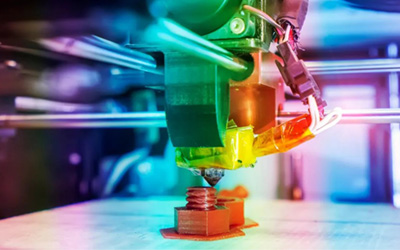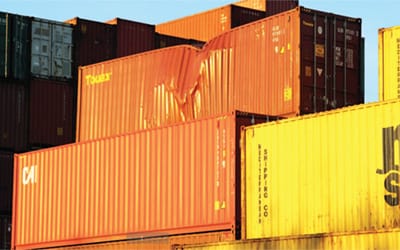3D Printing: Unleashing Innovation
In recent years, 3D printing has emerged as a disruptive force in various industries, revolutionizing traditional manufacturing processes. Its impact on global supply chains and freight forwarding is profound, reshaping logistics landscapes and offering unprecedented opportunities for innovation and efficiency. This blog article delves into the transformative power of 3D printing in logistics and its implications for the future of supply chain management and freight forwarding.
3D printing, also known as additive manufacturing, involves creating three-dimensional objects by layering materials based on digital models. This technology enables the production of complex shapes with remarkable precision and efficiency.
Advantages of 3D Printing in Manufacturing
 Rapid Prototyping: 3D printing allows for the quick and cost-effective creation of prototypes, accelerating the product development cycle.
Rapid Prototyping: 3D printing allows for the quick and cost-effective creation of prototypes, accelerating the product development cycle.
Customization: Manufacturers can easily customize products to meet individual customer needs, fostering greater customer satisfaction and loyalty, meaning 3d printing in logistics is a game changer.
Reduced Waste: Unlike traditional manufacturing methods, which often result in significant material wastage, 3D printing minimizes waste by utilizing only the necessary materials for production, unbelievable technology saving waste ultimately saving the environment.
The Impact of 3D Printing on Global Supply Chains
The integration of 3D printing into global supply chains and freight forwarding operations has the potential to streamline processes and enhance efficiency across the logistics spectrum. 3d printing in logistics will be a force that can change the landscape forever, it will allow companies to produce parts in house therefore cutting down the need to outsource the parts in the first place.
Optimized Inventory Management
By enabling on-demand manufacturing, 3D printing reduces the need for large inventories, leading to significant cost savings for businesses. With 3D printers strategically located within supply chain networks, companies can produce goods closer to the point of consumption, minimizing lead times and transportation costs.
Enhanced Supply Chain Resilience
 Traditional supply chains are susceptible to disruptions such as natural disasters, geopolitical conflicts, and pandemics. 3D printing in logistics offers a decentralized manufacturing model, allowing companies to diversify their production facilities and mitigate risks associated with centralized manufacturing hubs. In the event of a supply chain disruption, businesses can quickly shift production to alternate locations, ensuring continuity of operations.
Traditional supply chains are susceptible to disruptions such as natural disasters, geopolitical conflicts, and pandemics. 3D printing in logistics offers a decentralized manufacturing model, allowing companies to diversify their production facilities and mitigate risks associated with centralized manufacturing hubs. In the event of a supply chain disruption, businesses can quickly shift production to alternate locations, ensuring continuity of operations.
Accelerated Time-to-Market
In today’s fast-paced market environment, speed is of the essence. 3D printing in logistics enables rapid prototyping and iterative design processes, reducing time-to-market for new products. By shortening product development cycles, companies can stay ahead of competitors and capitalize on emerging market trends more effectively.
The Future of 3D Printing in Logistics
 As 3D printing continues to evolve, its impact on global supply chains and freight forwarding will only intensify. Embracing this innovative technology presents opportunities for businesses to enhance efficiency, reduce costs, and unlock new revenue streams.
As 3D printing continues to evolve, its impact on global supply chains and freight forwarding will only intensify. Embracing this innovative technology presents opportunities for businesses to enhance efficiency, reduce costs, and unlock new revenue streams.
To fully harness the potential of 3D printing in logistics, companies must invest in the necessary technology infrastructure and talent development initiatives. This includes deploying advanced 3D printing systems, establishing digital supply chain platforms, and training employees to leverage additive manufacturing technologies effectively.
Collaborative Partnerships
Collaboration is key to driving innovation in the logistics sector. Businesses should seek strategic partnerships with 3D printing companies, research institutions, and logistics service providers to explore new applications and business models enabled by additive manufacturing.
Adapting to Regulatory Changes
As 3D printing becomes more widespread, regulatory frameworks governing intellectual property rights, product safety, and quality standards will evolve. Companies must stay abreast of these regulatory changes and ensure compliance to mitigate legal risks and safeguard brand reputation. Evolving Regulatory Landscape for 3D Printing
Conclusion
In conclusion the impact of 3D printing in logistics and on global supply chains in freight forwarding is transformative, offering unparalleled opportunities for innovation and efficiency. By embracing this disruptive technology, businesses can optimize their operations, enhance resilience, and stay ahead in an increasingly competitive market.
The effect of 3D printing in logistics will be felt not only by freight moving companies, but within manufacturing and shipping centres around the world, including world leaders like China, Saudi Arabia and the United Arab Emirates. The effect will also be felt across high-traffic shipping lanes.
All of these effects will trickle down to affect the trucking industry and freight moving companies by almost 25%, according to Price Waterhouse Coopers. PWC also suggests there is ample room for logistics companies to adjust and capitalize on these trends; forward-thinking freight services providers can employ strategies to respond to industry changes: by redesigning their networks, shifting their efforts, and even creating new services to support the new three-dimensional world.
FAQs
How does 3D printing impact traditional manufacturing processes?
3D printing revolutionizes traditional manufacturing by enabling on-demand production, rapid prototyping, and customization.What are the benefits of integrating 3D printing in logistics to supply chain management?
Integrating 3D printing into supply chains reduces inventory costs, enhances resilience, and accelerates time-to-market for new products.Is 3D printing suitable for mass production?
While 3D printing is ideal for low-volume production and customization, advancements in technology are making it increasingly viable for mass production applications. How does 3D printing contribute to sustainability in logistics?
How does 3D printing contribute to sustainability in logistics?
By minimizing material wastage and reducing transportation distances, 3D printing in logistics helps companies achieve sustainability goals and minimize their environmental footprint.What are the limitations of 3D printing in logistics?
Challenges such as material constraints, limited scalability, and regulatory uncertainties may pose obstacles to the widespread adoption of 3D printing in logistics.How can businesses prepare for the future of logistics with 3D printing?
Businesses should invest in technology infrastructure, foster collaborative partnerships, and adapt to evolving regulatory landscapes to capitalize on the opportunities presented by 3D printing.



 How does 3D printing contribute to sustainability in logistics?
How does 3D printing contribute to sustainability in logistics? 





